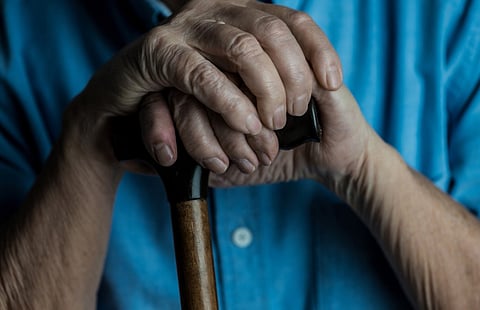
- Home
- Live Blog
- Breaking News
- Top Headlines
- Cities
- NE News
- Sentinel Media
- Sports
- Education
- Jobs

India’s demographic dividend also brings the reality of the population of senior citizens gradually rising in the coming decades. Demographic studies indicate the percentage of senior citizens aged 60 years and older, who account for 8.6% of the total overall population now, will increase to 12% by 2030 and 20% by 2050. The country having a clear roadmap for taking care of senior citizens and also starting to act on it is essential to ensuring a quality life for the ageing population. The country’s population is projected to increase to about 166 crores by 2050, which implies that the population of senior citizens will increase to about 33 crores. About 71% of the elderly population live in rural India, due to which schemes, policies, and programmes laying proportionate emphasis on fund allocations are crucial to bridge existing rural urban gaps. New models of economic growth compelling youth to migrate to new citizens far away from homes for jobs and livelihoods have given rise to new social realities. As they are required to settle down in towns, cities, or rural areas where they work, the joint family system has gradually weakened, and their parents and other elderly members are required to manage on their own. The government’s care for senior citizens needs to go beyond schemes or monthly cash payouts or reimbursements of health expenditures and must encompass building an enabling ecosystem. Application of digital technology to make access to healthcare easy and hassle-free, doorstep and online delivery of social welfare scheme benefits, including subsidised rations or medicines, etc., will take away much of their worries. Innovative measures of doorstep delivery of regular healthcare service through Mobile Medical Van will go a long way in reaching out to those among senior citizens who are unable to visit hospitals due to physical difficulty or any ailment. The optimal benefits of digital or online services such as banking and healthcare will be possible only when digital literacy is imparted to the ageing population on a priority basis. Such an intervention cannot wait for senior citizens to reach the upper age brackets and must be planned in such a way that by the time they attain 60 years, they are digitally literate and are empowered to perform basic digital applications such as making online payments or checking bank accounts, transactions, and purchasing goods and services online so that their needs can be fulfilled at the click of their mobile phone button. Building awareness among them to stay protected against digital identity theft or financial fraud will be crucial to building their trust in the digital system as they are prepared for an enabling environment. Significant progress made under the BharatNet project implemented by the Department of Telecommunications to connect all the Gram Panchayats (GPs) with broadband connectivity has created immense potential for internet growth in rural India. So far, 2.14 lakh GPs of the total 2.32 lakh GPs in the country have been made service-ready, and elected representatives, besides panchyat functionaries, need to be trained to make the best utilisation of the available services and to innovate village development plans for using internet facilities for digitised service delivery for senior citizens. As the scope of the project has been extended to all inhabited villages beyond GPs, huge opportunities have been created at the village level for expanding the scale of digital applications to touch every section of society. Official data shows that so far, 2.15 lakh GPs have finalised the Citizens Charter for the delivery of citizen services in 29 sectors to ensure transparent and effective delivery of public services for sustainable development and an enhanced citizen service experience. The NITI Aayog’s latest report, titled “Senior Care Reforms in India: Reimagining the Senior Care Paradigm: A Position Paper,” puts the spotlight on the scale of deprivation of senior citizens from basic social security coverage in the country. Referring to “The Longitudinal Ageing Study of India (LASI) 2021 Report” on the national survey on the ageing population, the NITI Aayog report states that one in three senior citizens reported having depressive symptoms, and 32% reported low life satisfaction. In terms of social protection, only 18% reported being covered by any health insurance, 28% were aware of any concessions for senior citizens, and 24% reported problems in providing documents to avail services. Besides, 70% of the elderly population is dependent on everyday maintenance, and 78% are living without any pension cover. “A rising trend of nuclear families is also an important attribute for diminishing traditional family support systems. In addition, inadequate financial security nets and deficient financial planning for senior citizens are areas of concern, and they also tend to fall prey to financial abuse and fraud,” the report adds. India’s capacity to improve care for senior citizens and help them live with dignity and respect hinges on reaping demographic dividends to propel the country into a developed economy until this window remains open.